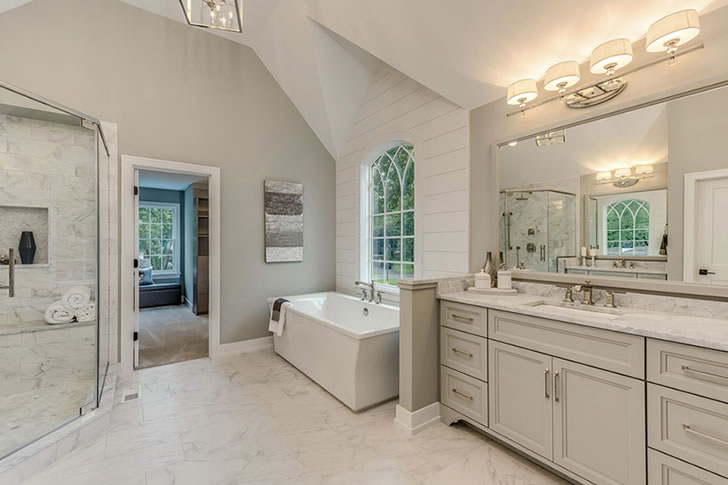How Seniors Manage Costs For Bathroom Remodeling?
For many seniors, remodeling a bathroom is not just a matter of updating an old space but making it more accessible and safe as mobility becomes more of an issue. However, bathroom renovations can be costly. So, how to achieving a bathroom that meets both the aesthetic and functional needs of older adults?

Understanding the Costs of Bathroom Remodeling
The cost of bathroom remodeling can range significantly depending on several factors including the size of the bathroom, the extent of the renovations, the materials used, and the labor costs, which vary by region. On average, a complete bathroom remodel can cost anywhere from $6,000 to $15,000. For seniors, the cost may be higher if the remodel includes accessibility features such as walk-in tubs, grab bars, or a wheelchair-accessible shower.
Breakdown of Average Costs in the U.S.:
Basic Renovation: $6,000-$10,000
Mid-Range Renovation: $10,000-$17,000
High-End Renovation: $17,000-$25,000+
Tips for Reducing Costs
- Plan Extensively
Before beginning any remodeling project, planning is essential. Seniors should clearly define what needs to be changed, what can be retained, and what must be updated for accessibility. Consulting with a contractor who has experience in designing age-friendly bathrooms can provide insights into what is necessary and what could be an unnecessary expense. - Seek Multiple Quotes
It’s important to get quotes from several contractors to compare prices. Seniors should ensure these quotes are detailed in the scope of work, materials to be used, and all associated costs. This not only helps in finding the best price but also in understanding where costs can be cut without reducing quality. - Look for Discounts and Grants
Several programs offer financial assistance for seniors looking to remodel their bathrooms for accessibility reasons. The U.S. Department of Housing and Urban Development (HUD) provides grants and loans for home modifications through programs like the Community Development Block Grant (CDBG). Non-profits like Rebuilding Together also offer free modifications for qualifying individuals. - Choose Cost-Effective Materials
Choosing the right materials can significantly affect the cost. For example, vinyl flooring can be a cheaper and safer alternative to tile, as it is less slippery and easier to install. Similarly, refinishing existing fixtures, rather than replacing them, can save money. - DIY What You Can
Simple tasks like painting, installing simple fixtures, or even demolishing old fixtures can be done by the seniors themselves or with the help of family and friends, saving on labor costs. However, tasks that require professional skills, especially those related to plumbing and electrical work, should be left to professionals. - Use Local Contractors
Hiring local contractors can reduce costs as they typically have lower travel expenses and can offer more competitive rates. Furthermore, local contractors may have more experience in sourcing materials at lower costs and often rely on word of mouth, which means they have a vested interest in customer satisfaction. - Implement Universal Design Principles
Universal design principles advocate for creating spaces that everyone, regardless of age or ability, can use. Integrating these principles in the bathroom remodel not only ensures accessibility but also means the bathroom will be functional for seniors as they age and potentially face more mobility issues. - Prioritize Safety and Accessibility Features
For seniors, safety and accessibility should be the primary focus. Features like walk-in tubs, non-slip floors, and grab bars are essential. While these features can be expensive, they are crucial for preventing falls and injuries.
Conclusion
Bathroom remodeling for seniors doesn’t have to break the bank. By planning effectively, comparing quotes, seeking financial assistance, choosing cost-effective materials, and focusing on essential modifications, seniors can achieve a safe, comfortable, and accessible bathroom at a reasonable cost. Always prioritize functionality and safety over aesthetics to ensure the remodel meets the unique needs of elderly users and provides value for money in the long run.







Recent Comments